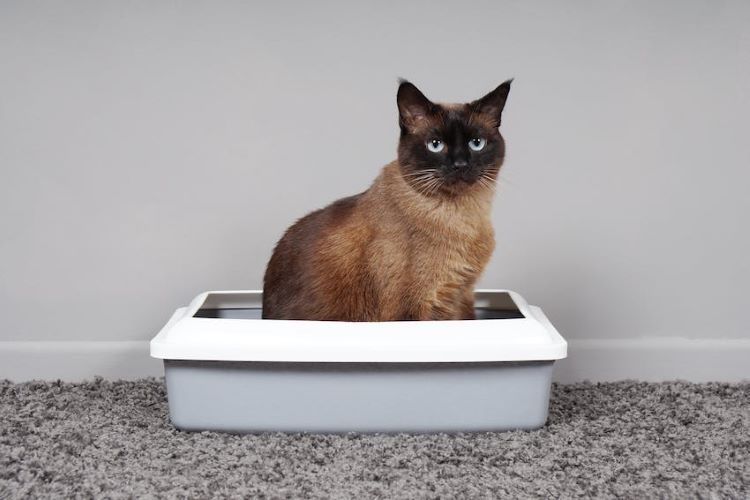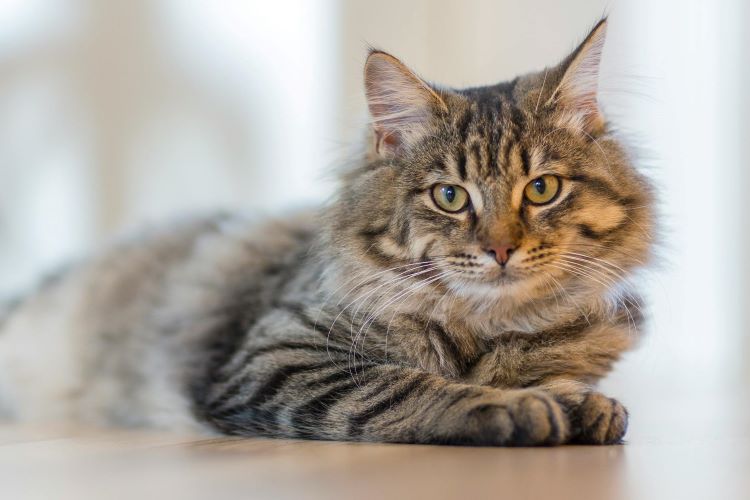Ready to help treat your pet to a healthy life?
What You need to Know About Feline Lower Urinary Tract Disease (FLUTD)
By : Trupanion Staff | Updated Oct 22, 2024

As a pet parent, it can be overwhelming to learn about all the different kinds of health conditions that can affect your furry friend. But as scary as it all may seem, the good news is that becoming more informed is the first step toward preventing serious situations. One illness that all cat owners should be aware of is feline lower urinary tract disease.
Commonly known in the veterinary community as FLUTD, this illness is one of the most common ones found in cats. However, it's often not common knowledge among pet parents. Left untreated, it can cause significant, painful issues for your feline. So, take just a few minutes now to learn more about FLUTD in cats and how you can make sure your pet gets the medical treatment they need.
What is feline lower urinary tract disease (FLUTD)?
Feline lower urinary tract disease is not actually a specific disease, but rather a generalized term for multiple issues affecting a cat's urinary tract.
Wondering about your cat's risk? Cats of all breeds can be affected by FLUTD. It has been found to be more prevalent among male cats, though females can still be affected. It's also important to consider your cat's age. According to clinical findings published in Today's Veterinary Practice, FLUTD is most commonly diagnosed in cats between 1 and 10 years of age.
Lower urinary tract diseases are the second most common health issue among cats in general, so if your feline is straining to urinate or does not produce urine, it is important to have a veterinarian check them as soon as possible.
Signs to watch for
Because FLUTD refers to a range of illnesses, signs can vary between pets and conditions. But, as you may have guessed, there is some overlap. Common signs of feline lower urinary tract disease are known as LUTS (lower urinary tract signs). They include (but are not limited to!) the following:
- Straining to urinate
- Urinating outside the litter box
- Painful urination (may involve making verbal sounds while trying to go)
- Licking or biting at the genital area
- Bloody urine
- Dehydration
- Vomiting
- Lack of appetite
- Depression
If you notice any of the above signs or just feel something is off, seek medical attention as soon as possible.
What causes FLUTD?
Again, it's important to remember that these signs may be caused by multiple conditions — all of which are characterized as feline lower urinary tract disease. Common culprits (that is, common health conditions) affecting your cat's urinary tract include:
- Bladder infection
- Stones or crystals in the bladder or urethra
- Urethral plug
- Stress
- Injury
- Tumor
- Weak bladder
- Congenital abnormality
In some cases, no disease can be identified as the cause behind these signs. In these situations, cats with signs of LUTS but no clear diagnosis are usually diagnosed instead with feline idiopathic cystitis (FIC). FIC itself has no determining veterinary testing and is instead only diagnosed when other conditions have been ruled out.
Either way, it can't be stressed enough that any signs of FLUTD should be taken seriously. Regardless of what you think the particular cause may be, only a licensed veterinarian will be able to tell for sure. Especially if your cat has trouble urinating, is experiencing gastrointestinal upset, or you notice blood, get veterinary care right away.

Treatment and diagnosis
FLUTD can vary greatly in severity, and some cases require urgent care. But since there's no way to tell from the signs alone which issue(s) may be affecting your pet, the only way to know for sure is to have proper medical analysis. In other words, your veterinarian will need to examine your cat to determine the exact problem and treat it accordingly. Depending on the signs, diagnostics may include a physical exam, blood work, ultrasound, radiographs, and/or a urinalysis.
Treatment for feline lower urinary tract disease varies based on the diagnosis and signs, but often includes:
- Antibiotics/medications
- Surgery to remove bladder crystals/stones or urethral blockage
- Expelling of small stones through urethra
- Surgery to remove tumor
- Urinary catheter
- Dietary changes
- Urinary acidifiers
- Fluid therapy
If your cat is diagnosed with struvite crystals or stones, your veterinarian may recommend prescription food to manage the pH of your cat's urine.
Protect your cat's long-term health
Your cat may experience recurrences of the same problem with feline lower urinary tract diseases; however, the likelihood will decrease as your pet gets older. With timely veterinary care and proper treatment, most cats continue to live happy lives without long-term consequences.
You can't predict your cat's future health, of course. So, if you haven't already done so, be sure to consider signing your pet up for a good cat insurance plan before disaster strikes.
